Pregnancy can be a difficult time for parents-to-be.
Sure, it’s exciting but also overwhelming with the number of decisions that you have to make daily, especially when you’re weighing up the mini crib vs crib dilemma.
How can you make the right choice?
Getting the nursery ready can be an exhausting process, but we’re here to help.
Our goal is to make sure that you stay informed.
With the baby on the way, parents-to-be needs to consider both options.
Both the mini crib and the standard crib are safe for your baby, but which one would suit you better? Well, there are several factors that you have to take into consideration first.
Each option has its advantages and disadvantages.
Understanding the pros and cons allows you to make an informed choice.
This article aims to shed light on the mini crib vs crib dilemma so that you can weigh the benefits and drawbacks of both choices before ultimately arriving to the best decision.
So, grab yourself a cup of coffee, and let’s dive into the world of cribs.
What You Need to Know About Mini Cribs
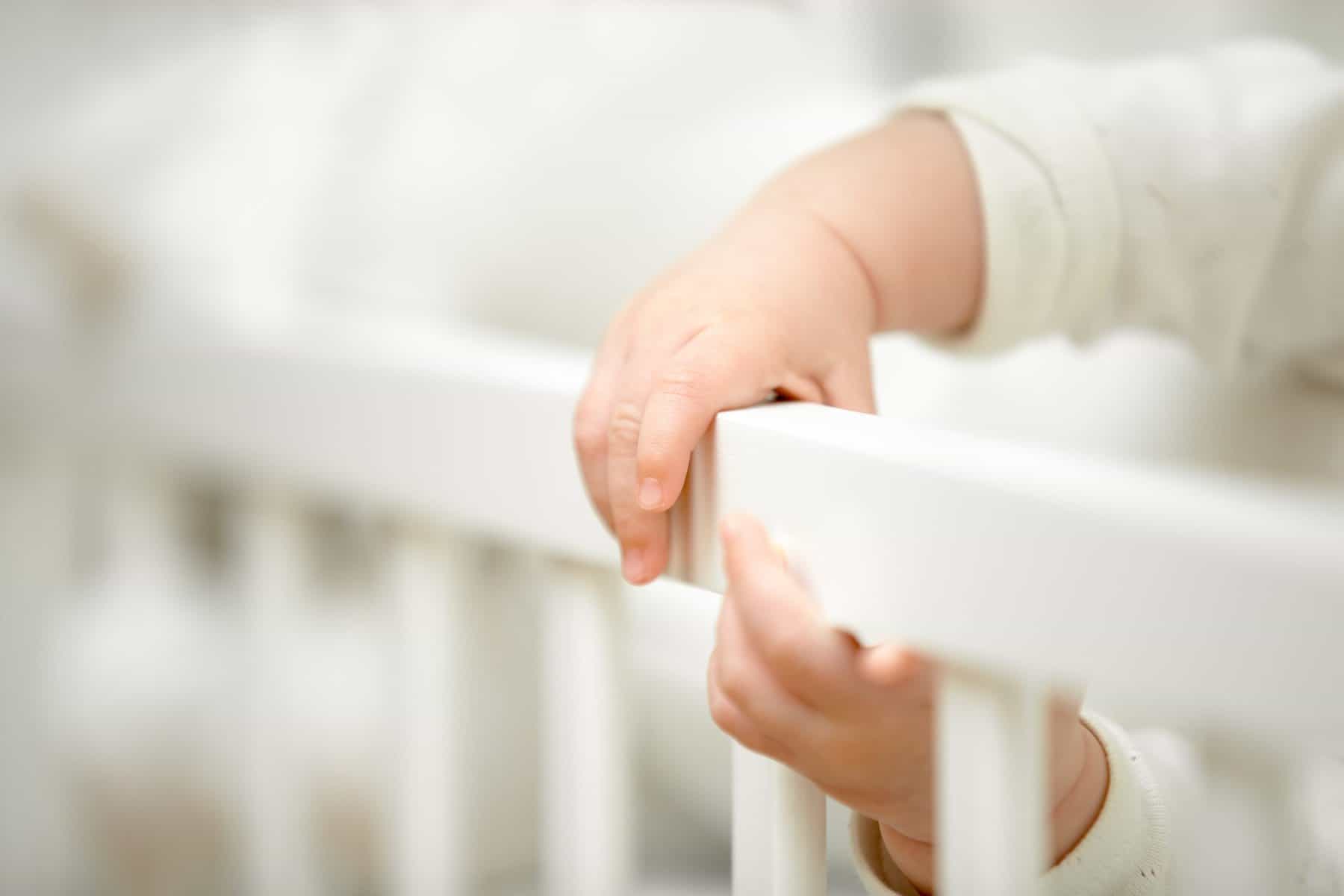
The self-explanatory name reveals a lot, but what other features does a mini crib have?
As the name not-so-subtly suggests, a mini crib is a smaller version of the standard crib.
Therefore, the dimensions of a mini crib are smaller, which makes it convenient.
But why would you need a smaller crib?
For parents that are struggling to manage space inside the nursery or parents that have to move the crib frequently, a mini crib presents a more suitable choice for everyday life.
Parents-to-be often wonder about the safety of mini cribs, and we’re glad to inform you that mini cribs are no less safe than standard cribs. They don’t compromise on safety.
Regarding safety, the mini crib vs crib dilemma is pointless since both options ensure a good night’s sleep for your baby, ensuring they stay just as safe and comfortable.
However, the mini crib can be a better choice for parents that are looking for portability.
Maybe it’s not aesthetically pleasing, but most mini cribs come with wheels. Wheels add to the overall portability, allowing parents to relocate the crib whenever they need space.
Another thing to consider is that mini cribs are generally less expensive.
That tips the scale significantly if you’re a parent on a budget.
So, here are the defining features and advantages of a mini crib:
- Smaller dimensions make it a convenient choice.
- Extra portability, especially with wheels.
- Just as safe as standard cribs.
- A cost-effective option for parents with a tight budget.
- It can be placed in smaller, limited spaces.
If these features fit your preferences, then a mini crib is a better option for you.
What You Need to Know About Standard Cribs
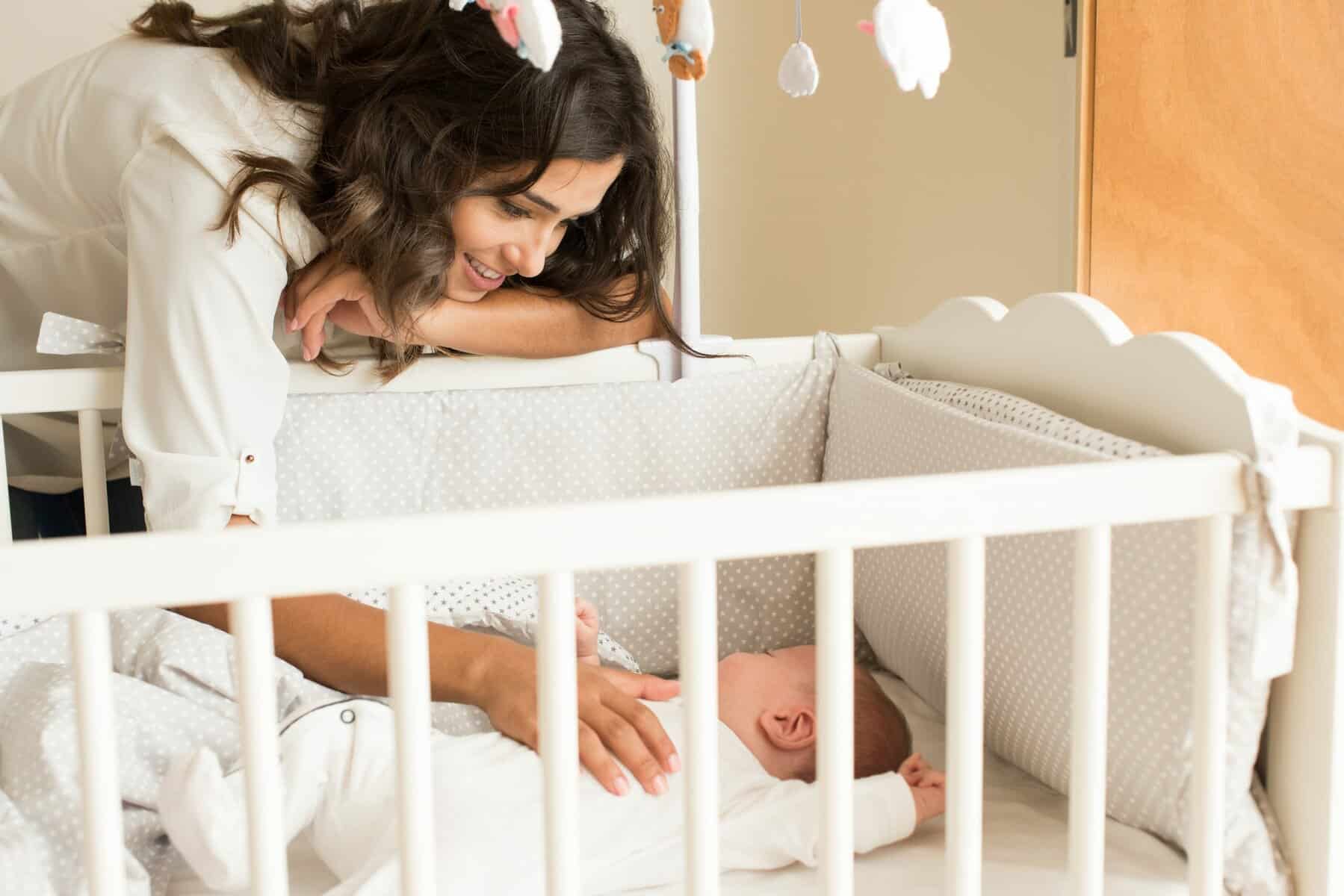
In comparison to its smaller alternative, a standard crib provides more space.
The additional space does not guarantee additional safety, however. Both the smaller and the larger versions of the crib provide peace of mind for parents worried about safety.
What about the dimensions?
All right – let’s take a closer look at the difference in size.
A standard crib typically measures 52 inches in length and 28 inches in width.
On the other hand, a mini crib measures 38 inches in length, 24 inches in width.
In both cases, the railings are the same height.
However, the width and the length may vary slightly in mini cribs.
In order to prevent entrapment, your crib of choice needs a snug-fitting mattress.
Full-size cribs are made with longevity in mind. They have a sturdy, durable structure constructed with a combination of wood and metal to provide stability and security.
In contrast to mini cribs, standard cribs tend to be used for longer periods of time. In fact, you’re likely going to keep using the full-size crib until your baby no longer needs it.
On the other hand, babies often have to transition from a mini crib due to size limits.
Full-size cribs are more expensive, but the longevity makes it a worthwhile investment.
The only drawback of the standard crib is its bulky size. For parents that are struggling with space or parents that need more portability, a mini crib is a much better choice.
With that in mind, here are the defining features of a standard crib:
- Provides ample space for your baby to sleep and play.
- Made from sturdy, durable materials.
- It can be used for a very long time.
- More expensive but assures longevity.
- It can be accessorized in many ways.
If you don’t need the extra space, a standard crib is a way to go.
How to Make the Right Choice

Now that you understand the key differences between a mini crib and a crib, it’s important first to weigh the two options carefully and to compare their benefits and drawbacks.
Naturally, the first thing you want to consider is the size.
Size is often the deciding factor of the mini crib vs crib dilemma.
If you’re struggling to manage space or if you need to place two cribs in the nursery for two babies, mini cribs are a much better option due to their smaller size and portability.
However, if you have enough room, there’s no reason not to go for a full-size crib.
That way you get more space for your baby to sleep and play.
Another factor that parents have to take into account is the durability of the crib.
Full-time cribs are generally made from high quality materials, ensuring longevity. On the other hand, mini cribs are usually made with lightweight materials to provide portability.
Don’t forget to consider weight limitations. How much weight can a crib hold? Full-size cribs and mini cribs have different weight limitations and it’s important to consider them.
If you’re looking for convertibility, you won’t find it in a mini crib.
However, certain standard crib models come equipped with convertibility options, allowing parents to transition their child effectively from a crib to a full-size toddler bed.
Then again, there’s also the matter of the price point.
How high is your budget? If you’re on a tight budget, you may want to consider getting a mini crib. Just make sure to remember to do your research, because prices tend to vary.
Mini cribs can come with extra features, but lack some of the accessorizing that full-size cribs have, such as the option to attach a changing table or include a baby activity center.
All these minute differences can help you arrive to the best decision.
However, if you’re worried about safety in regards to the mini crib vs crib dilemma, then rest assured that you have nothing to worry about. Both options provide adequate safety.
That said, here’s what you need to bear in mind before making a final decision:
- Consider the size of each option.
- Think about your available space.
- Do you want to have convertibility?
- Consider the differences in durability.
- What about the longevity of use?
- Determine your budget.
- Consider your personal taste.
The Pros and Cons of a Mini Crib
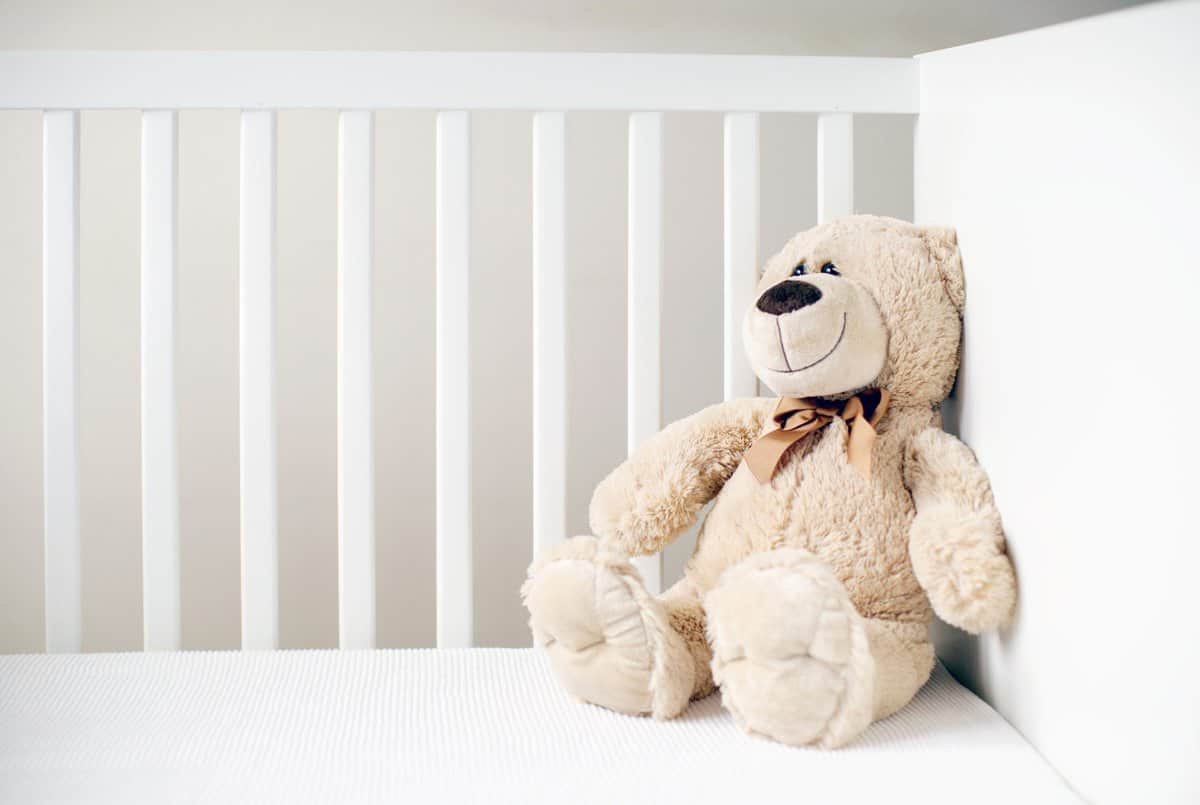
Still not sure about what crib to get?
Let’s take a better look at the pros and cons of each option, starting with mini cribs.
Just like any other baby product, there are benefits and drawbacks to look into.
Understanding the pros and cons can help you make an informed decision.
Here are the main benefits of small-sized cribs:
• Pro: They save space.
Take into account your living area. How much space do you have? A regular crib takes up a lot more room than a mini crib and may make your nursery look overly claustrophobic.
For parents struggling with space, a mini crib can be a lifesaver.
• Pro: They are easy to relocate.
One of the main benefits of a mini crib is the portability it offers. Due to their smaller size, parents can easily move the baby’s sleeping area from room to room when they see fit.
That’s why mini cribs usually come with wheels.
• Pro: They cost less.
Keeping in mind that you’re not compromising your baby’s safety with a small-sized crib, it can be an ideal cost-effective option for parents that may be struggling with finances.
Smaller cribs cost less, but babies tend to outgrow them much sooner.
• Pro: They look stylish.
Even though this is a purely subjective matter, mini cribs are generally more focused on the aesthetic side of things – making them easy to match with the decor of the nursery.
All right, but what about the cons?
• Con: They have a limited lifespan.
As opposed to full-size cribs, especially ones that can be converted into a toddler bed, small-sized cribs have a limited lifespan. Babies outgrow them sooner rather than later.
So, even if they are less expensive, you will need to invest into an alternative when the time comes. Depending on how your baby develops and grows, the timeframe varies.
• Con: They have less space for storage.
Certain full-size cribs come equipped with under-crib storage, which allows parents to store and organize their baby’s essential items such as diapers, clothes and other items.
Mini cribs, however, generally don’t offer that kind of luxury and convenience.
• Con: They can be less durable.
Even though safety is generally not an issue with mini cribs, cheaper models are often made from precariously lightweight materials, which can endanger the baby’s safety.
Yes, it’s a small-sized crib, but you still want to keep quality in mind.
• Con: They can be uncomfortable.
Some babies react poorly to the lack of room to maneuver and play.
A newborn baby may not object to the lack of space, but as they grow and develop the ability to move around, they may feel uncomfortable by the size restrictions of the crib.
The Pros and Cons of a Regular Crib
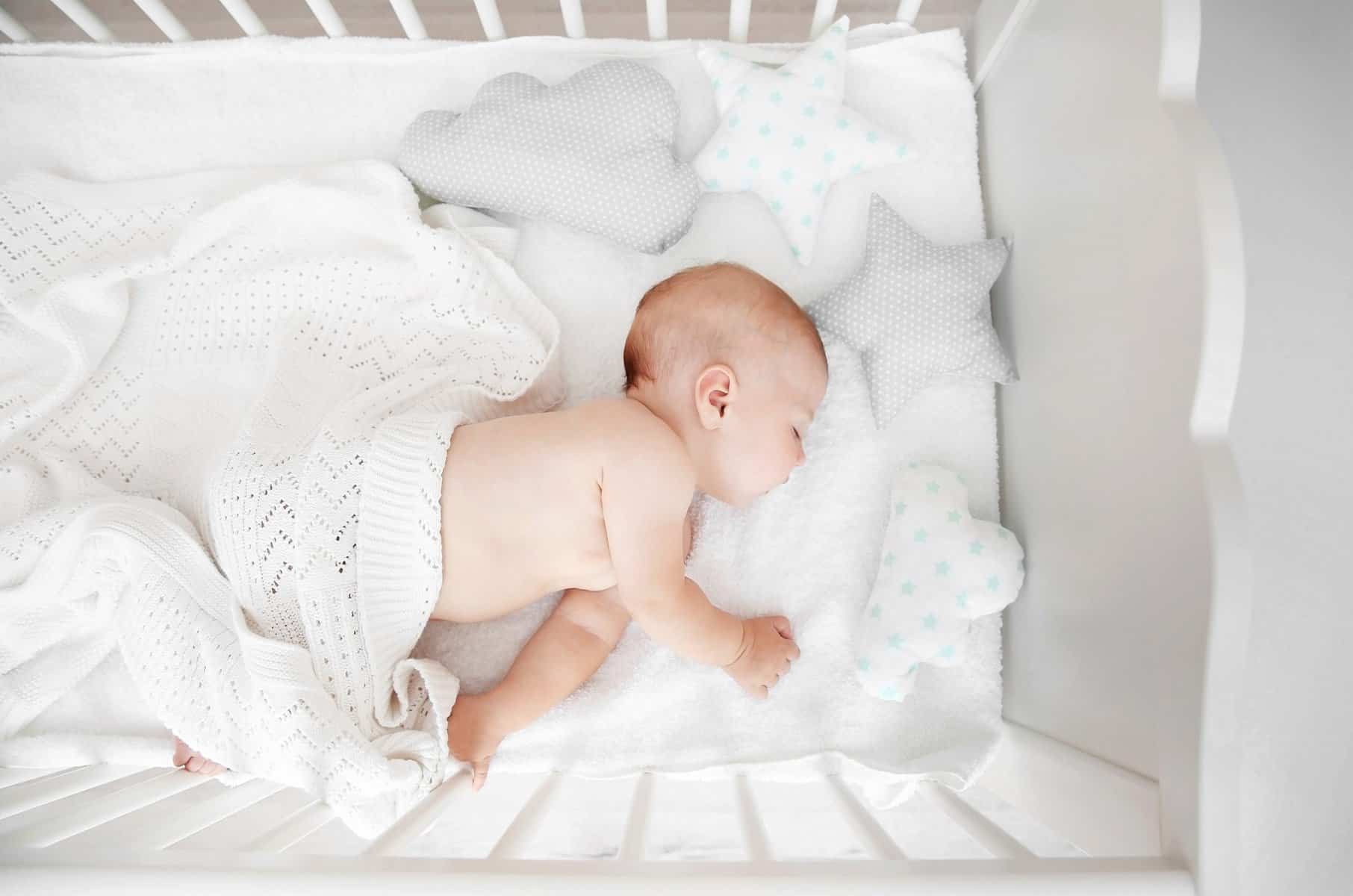
A standard crib is also a standard choice for many parents-to-be. Why? Because it has everything that a mini crib has, plus the benefit of additional space for fun activities.
Still, that doesn’t mean that there aren’t any disadvantages to this option.
In order to resolve the mini crib vs crib dilemma, you have to examine both the pros and cons of each option. Don’t worry, because we’re here to help you make a good decision.
Here’s what you need to know about regular cribs:
• Pro: They are more spacious.
Space is ultimately the key factor that you have to take into account. If you have room in your nursery to place a full-size crib, then there’s no reason to think further than that.
Give your baby all the room they need right from the get-go.
• Pro: They last longer.
Yes, a full-size crib lasts for as long as you need it. Your baby develops every day, and the extra space will keep them happy as they learn to navigate the environment around them.
Eventually, after 2 to 3 years, you will have to transition out of the crib.
Until then, a regular crib is a perfect option if you’re worried about longevity.
• Pro: They are made with quality materials.
Most regular-sized cribs are made with quality in mind. That means that a standard crib is not only safe but durable, too. It can withstand regular use and last a very long time.
However, that doesn’t mean that you shouldn’t look after the crib yourself. Regular maintenance is important. Make sure to check for wear and tear and to clean the crib.
Do what you can to prolong the crib’s lifespan.
• Pro: They can be accessorized.
As opposed to mini cribs, standard cribs can be accessorized with various options. They can even be convertible, allowing parents to transform the crib into a toddler bed.
That’s all fine and dandy, but what about the cons?
• Con: They are often too bulky.
For parents that find it difficult to manage space in the nursery room, a full-size crib can present an additional challenge, a challenge that they may not be able to solve effectively.
In that case, you may have to go for a mini crib due to the benefit of smaller dimensions.
• Con: They lack portability.
Unlike mini cribs, full-size cribs are big, spacious and bulky – meaning that you can’t easily transport them room to room. The lack of portability can ultimately be a decider.
• Con: They cost more.
As opposed to their smaller alternatives, full-size cribs are generally more expensive.
However, when you consider everything, you aren’t really saving that much money in the long run. That’s because you have to transition out of a mini crib eventually.
On the other hand, you can continue using the standard crib for years to come.
You’re actually getting more bang for your buck with a regular crib.
Safety Tips for Using a Mini Crib
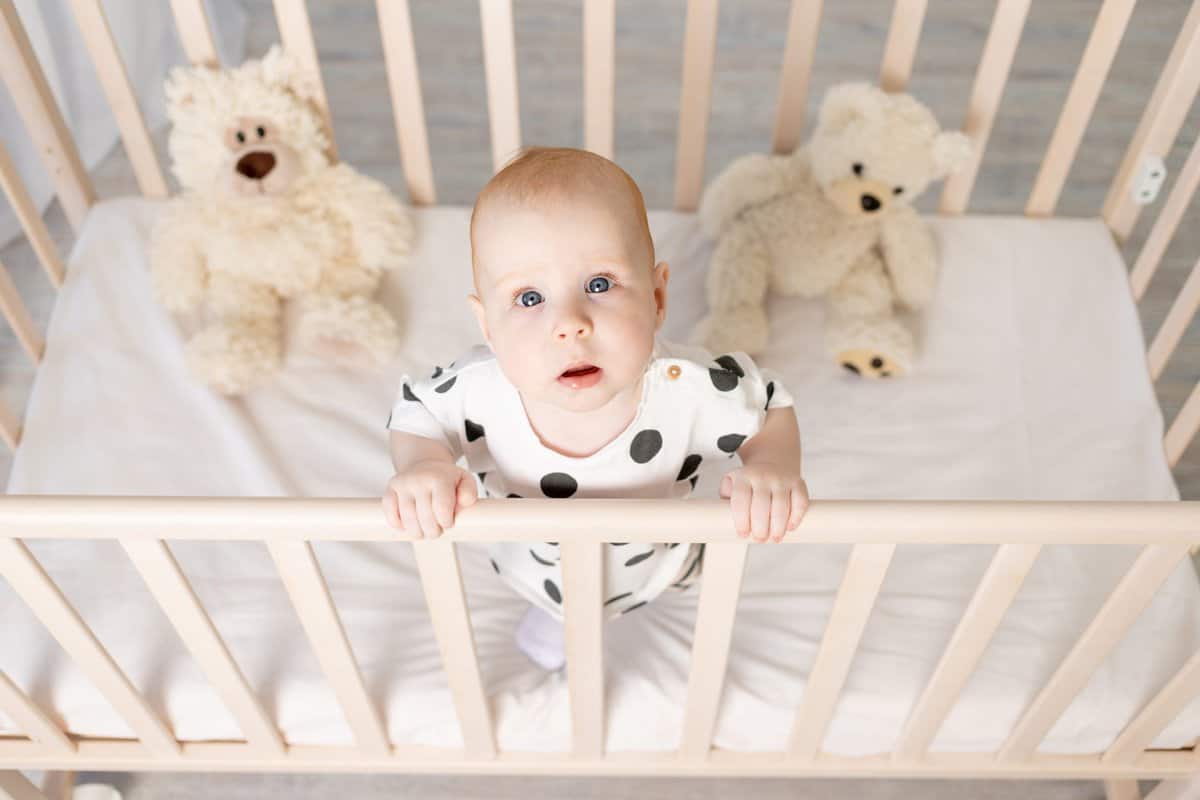
As always, safety should be your number one concern.
The mini crib vs crib dilemma is a difficult one for parents-to-be to navigate, but in terms of keeping your baby safe – both the mini crib and the regular crib do an adequate job.
In fact, there’s no difference regarding the safety features of either option.
Just make sure that you buy from reputable brands and prioritize high quality materials.
Still, there are precautions that you have to take to maximize your baby’s safety.
First things first, you need to find a suitable mattress for your mini crib. The mattress has to fit tightly into the mini crib, leaving no gaps to endanger your baby potentially.
Refer to the instruction manual of your mini crib to find the appropriate dimensions for the mattress. Also, don’t forget to buy a firm, flat mattress. A soft mattress can be dangerous.
Whether you’re using a mini crib or a standard crib – the same rules apply.
No stuffed animals, blankets or items inside the crib. You want to make sure that you take every necessary precaution towards lowering the risks of sudden infant death syndrome.
Remember to position the crib in a way that prevents potential hazards.
It goes without saying, but a crib should never be placed close to the window.
Don’t forget to consider the room temperature and to monitor whether your baby is hot or cold. Dress them appropriately for the weather to keep your little one comfy.
Regardless of size, cribs are considered safe, but it’s still your primary responsibility to observe your baby and to react and respond if they display any signs of discomfort.
Baby Refusing to Sleep in a Crib?
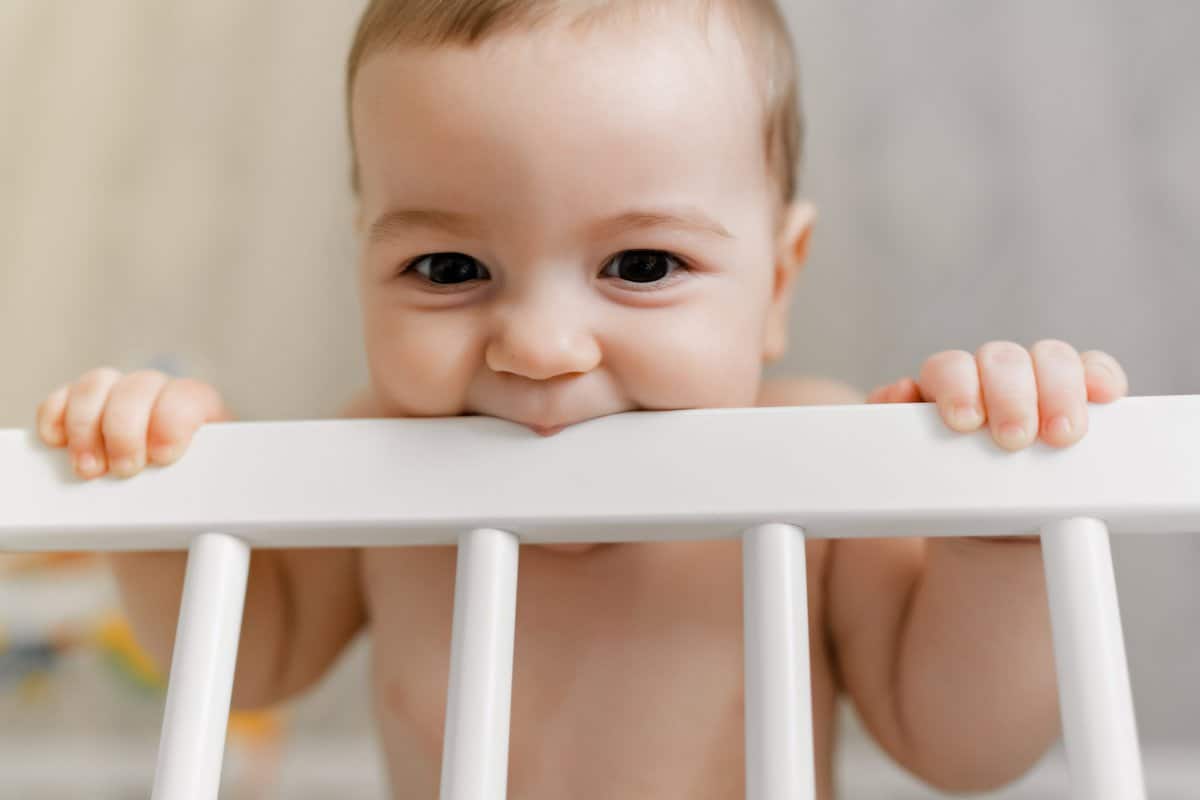
The parenting journey is filled with unexpected, often frustrating problems.
One of these problems is buying a crib, getting everything ready for the baby’s arrival, only for the baby to refuse outright to sleep in a crib during the first months of their life.
Sometimes, your baby may even be awake in a crib but not crying.
Yes, it could be due to the crib. Mini cribs are great for many reasons, but sometimes babies dislike them because there’s not enough room for them to sleep comfortably.
However, before you start regretting your decision, there’s a variety of solutions that you can try to improve your baby’s sleep and get them adjusted to a small-sized crib.
First things first focus on remaining calm. Don’t get frustrated. Frustration will undo any efforts and attempts to fix the situation. Stay composed as you work to solve the issue.
Try to understand why it happens before looking for a solution.
Your baby could be hot, cold or hungry. Take everything into consideration.
Usually, if you’ve got a baby refusing to sleep in a crib, it’s likely due to something more trivial, like your baby simply asking to be fed, rather than the mini crib vs crib dilemma.
Here are a few helpful tips that could potentially resolve the situation:
• Be consistent. Babies appreciate consistency. It’s how they navigate the world. It’s what makes sense. If you’re consistent, you’re helping your baby learn how to predict things.
A good sleep schedule is built on consistency. So, you must stay consistent with your baby’s sleep and nap times. Being predictable can help them adjust to the crib sooner.
• Use a firm and flat mattress. A good crib mattress is firm not only because it helps prevent the risk of sudden infant death syndrome but because it’s comfortable, too.
Babies are messy. So, keep the mattress and crib sheets clean and hygienic at all times.
• Always place your baby on their back when it’s time to sleep. Of course, this is done because it’s the safest position for a newborn baby, whether it’s a crib or a bassinet.
• Keep the environment dark and quiet. That means no distractions. No loud noises to disrupt your baby’s sleeping and no bright lights that could potentially keep them awake.
• Mind the temperature, too. A baby may refuse to sleep if it’s too hot or cold.
Always dress your baby appropriately for the weather.
• Incorporate a relaxing bedtime routine. A soothing routine is important after a long day of activities. It helps babies not only get ready for sleep but to anticipate sleep, too.
Whether it’s a bath before bed or story time – relaxing routines help babies sleep better.
• There could be other underlying reasons why your baby is refusing to sleep, such as natural sleep regression or separation anxiety. Understanding the why is important.
However, if none of these methods work despite your consistency and dedication, it’s always the best choice to consult a pediatrician for further guidance and assistance.
They can even help you pinpoint whether it’s the size of the crib that’s making them uncomfortable. In that case, your pediatrician may provide safe and healthy alternatives.
When to Stop Using a Mini Crib?
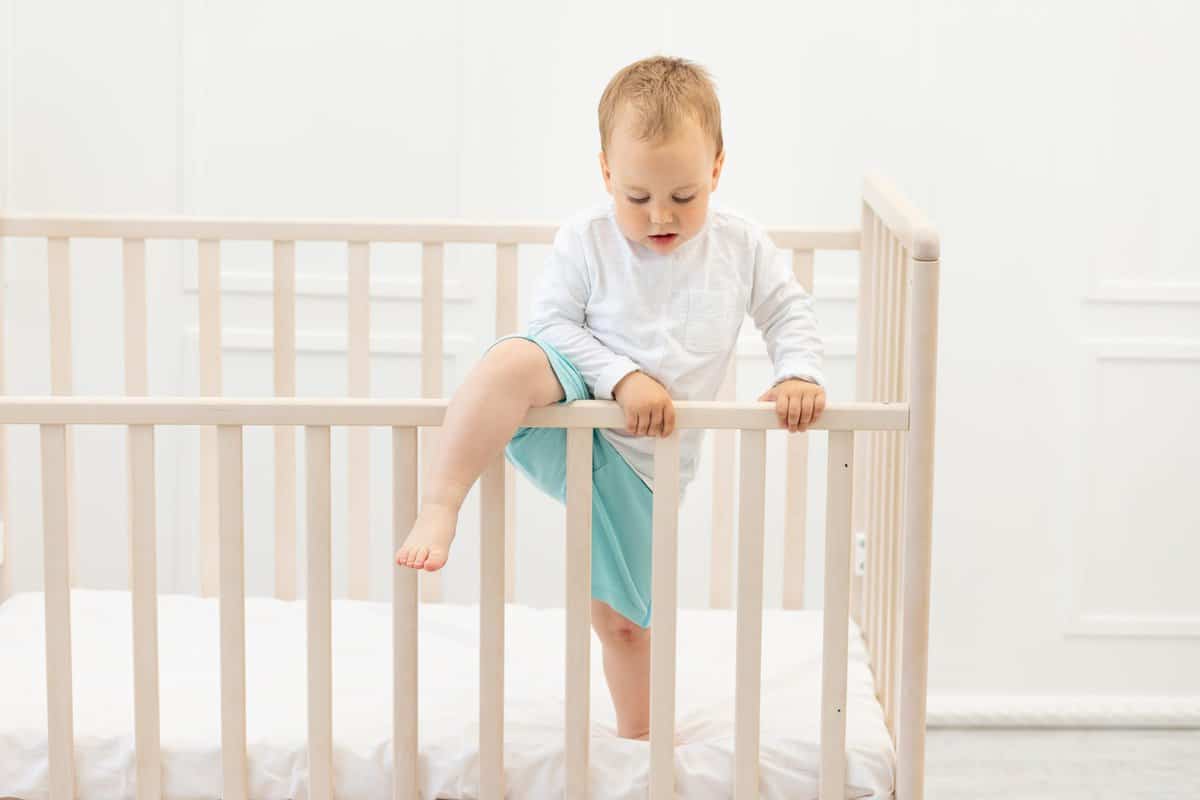
If you’re going for a mini crib, you should know that there’s a good chance that your baby may outgrow the mini crib sooner rather than later. This varies on a baby-to-baby basis.
At 24 inches wide and 38 inches long, babies may become uncomfortable with the lack of room to maneuver, especially when they age and start exploring their environment.
So, it’s best to keep track of your baby’s progress and to transition appropriately.
For example, a good time to transition from a mini crib into a toddler bed is when your little pumpkin becomes an escape expert and starts climbing the safety railing.
Mini cribs are great for the benefits they provide, but parents need to know that they don’t last as long due to their size limitations and their weight restrictions.
Keep track of your baby’s weight. Mini cribs have a lower weight capacity. It’s not just your baby’s weight that you must calculate, but any additional items, including the mattress.
All mini cribs have weight limitations. If exceeded, you put your baby at risk.
So, mind the safety guidelines and do as the manual instructs.
The best way to know if your baby has outgrown the mini crib is to check the following:
- Is your baby too big? If they don’t have enough room to move around safely and comfortably, your baby has likely outgrown the mini crib and needs to transition.
- Is your baby trying to escape the crib? If they have learned how to climb the safety railing, it’s time to look for an alternative to transition to, such as a toddler bed.
- Is your baby getting restless? If your baby is trying to tell you that they’re not comfortable with the limited room, you may have to find a suitable alternative soon.
As always, make sure that your little one stays safe, comfortable and happy.
More Things to Keep In Mind
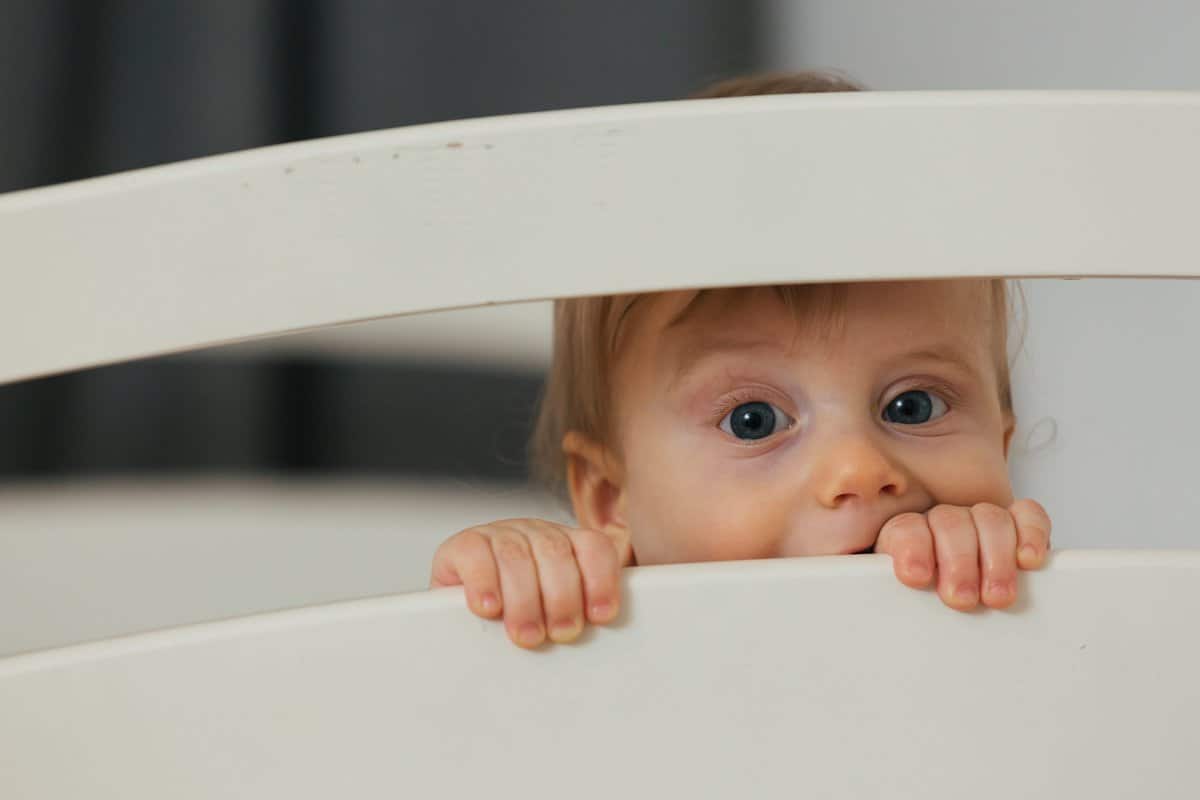
Mini cribs are small, compact, useful, and portable but not as sturdy as full-size cribs.
Mini cribs use lighter materials in order to ensure portability. However, that doesn’t mean that mini cribs are dangerous, but standard cribs are considered much more sturdy.
Buying a mini crib is cost-effective at first, but eventually the expenses even out. That’s because you must purchase a toddler bed when your baby outgrows the mini crib.
Don’t forget to consider the assembly process of mini cribs. Usually, mini cribs are easier to put together than regular cribs. Mini cribs have fewer parts and they’re smaller.
The individual pieces of a mini crib are much easier for parents to handle.
But, what if you have more than one baby to worry about?
Mini cribs are the best option if you lack space for your growing family inside your home.
Remember never to put two babies together in a single mini crib – or any crib, for that matter. Each baby has to have their own sleeping area, be it a mini crib or a standard crib.
The mini crib vs crib dilemma can be frustrating for new parents.
Some things may entirely slip your mind – and that’s why we’re here to provide an all-encompassing guide to help you stay informed and make a decision you’re happy with.
The crib mattress is very important in ensuring your baby’s safety.
In mini cribs, the crib mattress is smaller in size and it can be more difficult to replace it if it gets damaged. That’s because the dimensions of mini cribs tend to vary significantly.
Even just a few inches of difference between the mini crib and the crib mattress can endanger your baby’s health. The crib mattress, therefore, has to fit the crib perfectly.
Use the information we provided above to maximize your baby’s safety.
Eventually you will have to transition out of a mini crib or a standard crib – so make sure to plan toward that by getting either a convertible crib or investing into a toddler bed.
A toddler bed enters the picture somewhere around 3 years of age, but it may happen sooner, depending on how your baby grows and how quickly they outgrow the mini crib.
Mini cribs are great, but they’re not a permanent solution.
Sooner or later, your baby is going to make a transition to a toddler bed. Plan ahead and remember that it’s best to observe your baby in order to know when to make the transition.
There are many things to remember when it comes to mini cribs.
However, your main focus should always be on your baby’s safety and comfort.
In Conclusion
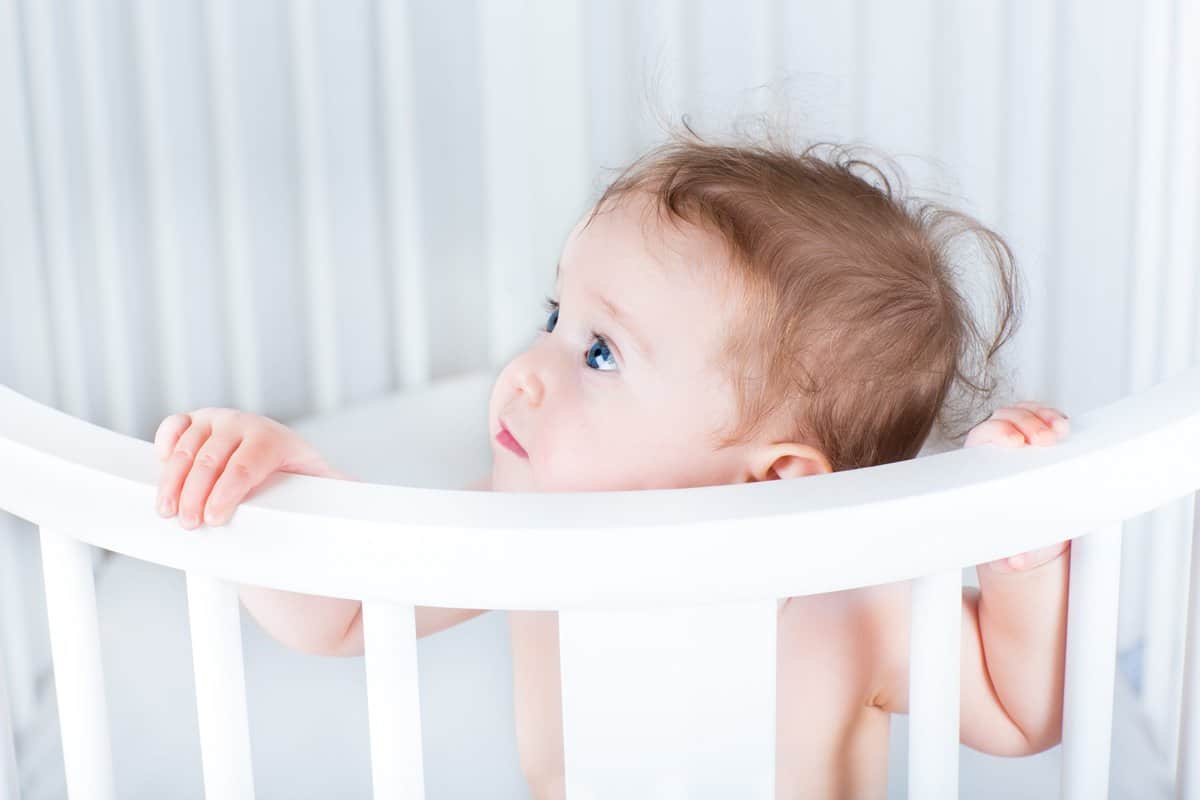
When it comes to the mini crib vs crib dilemma, it’s all about your personal needs.
Cribs come in great variety, so it’s up to you to choose what’s best for your baby.
Whether it’s mini cribs or full-size cribs – both options can suit your preferences.
Hopefully, our insight and suggestions can help you make the right decision. Just don’t make your decision too hastily. Consider everything – from the crib’s size to the mattress.
The differences are very subtle regarding cribs, but ultimately it’s all about size.
If you’re working with tight spaces, a mini crib will be the smarter choice. Having said that, if you have enough room, there’s no reason not to go for a regular-sized crib.
Regardless of your decision, both options can work out fine.
Just ensure you stay focused on keeping your baby safe and comfortable.

Mother of three and a primary school teacher. I’ve always loved being around children and helping them, so I chose my path as a teacher. It is sometimes hectic with three children, but I am 100 percent into it and wouldn’t change it for anything in the world.

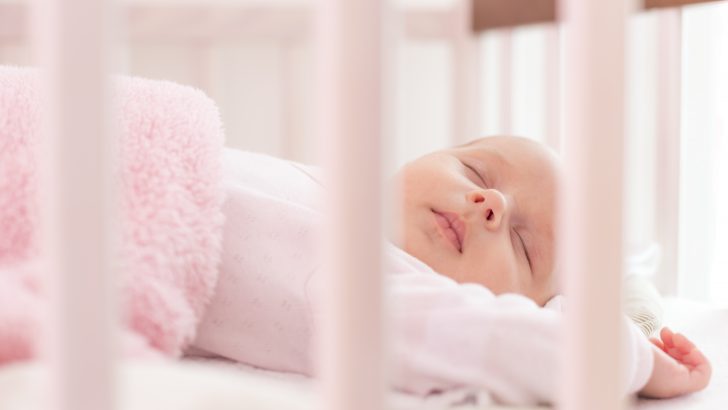
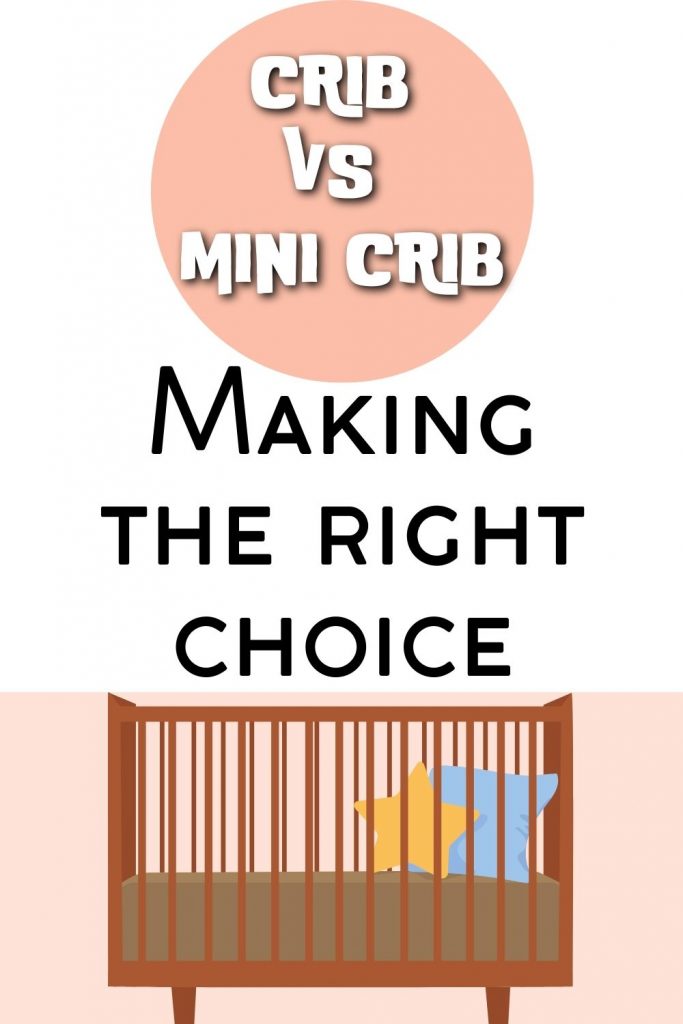
How Many Crib Sheets Do I Need? • Mama Bean Parenting
Thursday 13th of April 2023
[…] and 28 inches wide. Yes, that’s standard, but there are other sizes. For example, there are mini crib mattresses, as […]
How Long Can a Baby Sleep in a Mini Crib? • Mama Bean Parenting
Tuesday 11th of April 2023
[…] you still haven’t decided between a traditional crib and a mini crib. Either way, this in-depth guide aims to address all your […]